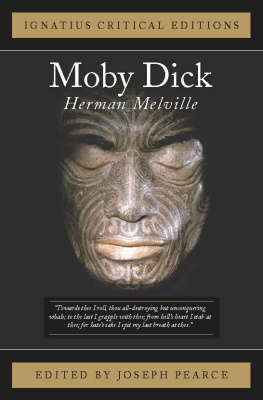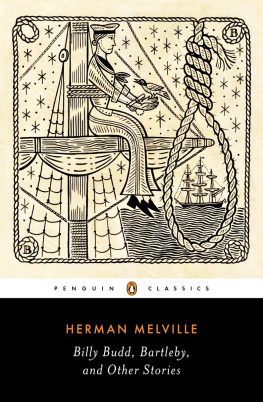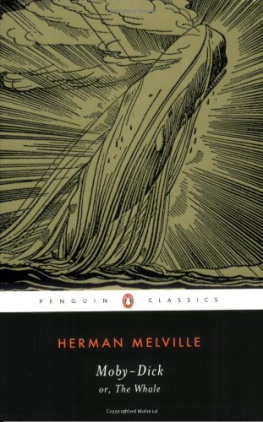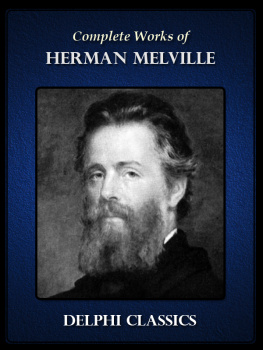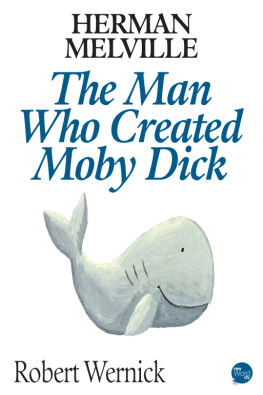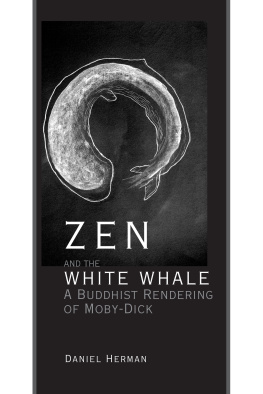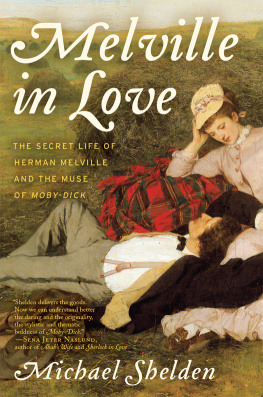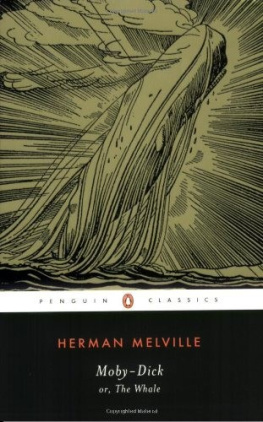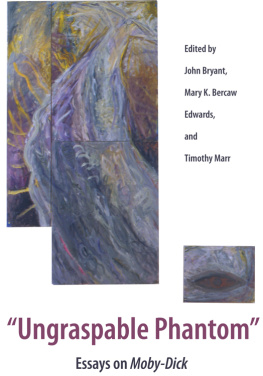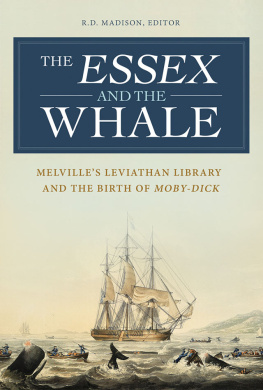Herman Melville - Moby Dick: Ignatius critical editions
Here you can read online Herman Melville - Moby Dick: Ignatius critical editions full text of the book (entire story) in english for free. Download pdf and epub, get meaning, cover and reviews about this ebook. year: 0, genre: Art. Description of the work, (preface) as well as reviews are available. Best literature library LitArk.com created for fans of good reading and offers a wide selection of genres:
Romance novel
Science fiction
Adventure
Detective
Science
History
Home and family
Prose
Art
Politics
Computer
Non-fiction
Religion
Business
Children
Humor
Choose a favorite category and find really read worthwhile books. Enjoy immersion in the world of imagination, feel the emotions of the characters or learn something new for yourself, make an fascinating discovery.
- Book:Moby Dick: Ignatius critical editions
- Author:
- Genre:
- Year:0
- Rating:5 / 5
- Favourites:Add to favourites
- Your mark:
- 100
- 1
- 2
- 3
- 4
- 5
Moby Dick: Ignatius critical editions: summary, description and annotation
We offer to read an annotation, description, summary or preface (depends on what the author of the book "Moby Dick: Ignatius critical editions" wrote himself). If you haven't found the necessary information about the book — write in the comments, we will try to find it.
Moby Dick: Ignatius critical editions — read online for free the complete book (whole text) full work
Below is the text of the book, divided by pages. System saving the place of the last page read, allows you to conveniently read the book "Moby Dick: Ignatius critical editions" online for free, without having to search again every time where you left off. Put a bookmark, and you can go to the page where you finished reading at any time.
Font size:
Interval:
Bookmark:
MOBY-DICK
HERMAN MELVILLE
With an Introduction and Classic
and Contemporary Criticism
Edited by MARY R. REICHARDT
Ignatius Critical Editions Editor
JOSEPH PEARCE
IGNATIUS PRESS SAN FRANCISCO
Cover art:
Life mask taken of Chief Tapua Te Whanoa of the Ngati Whakaue hapu of the Rotorua region, showing the full facial moko design produced with a small bone adze dipped in liquid charcoal. 1854.
Location: National Museum of New Zealand, Wellington, New Zealand
Photo Credit: Werner Forman/ Art Resource, N.Y.
Cover design by John Herreid
2011 Ignatius Press, San Francisco
All rights reserved
ISBN 978-1-58617-416-3
Library of Congress Control Number 2010931806
Printed in the United States of America
Tradition is the extension of Democracy through time; it is the proxy of the dead and the enfranchisement of the unborn.
Tradition may be defined as the extension of the franchise. Tradition means giving votes to the most obscure of all classes, our ancestors. It is the democracy of the dead. Tradition refuses to submit to the small and arrogant oligarchy of those who merely happen to be walking about. All democrats object to men being disqualified by the accident of birth; tradition objects to their being disqualified by the accident of death. Democracy tells us not to neglect a good mans opinion, even if he is our groom; tradition asks us not to neglect a good mans opinion, even if he is our father. I, at any rate, cannot separate the two ideas of democracy and tradition .
G.K. Chesterton
Ignatius Critical EditionsTradition-Oriented Criticism for a new generation
CONTENTS
A Large and Liberal Theme: An Introduction to Moby-Dick
Mary R. Reichardt
Apocalyptic Readings of Moby-Dick : What Ishmael Returns to Tell Us
Robert Alexander
A LARGE AND LIBERAL THEME: AN INTRODUCTION TO MOBY-DICK
Mary R. Reichardt
University of St. Thomas
The task of writing on Moby-Dick is a daunting one. Recognized for nearly a century as one of the worlds great literary masterpieces, the novel has engendered countless critical works examining its every aspect. With its host of fascinating characters, its intriguing narrative voice, its mythic overlay, its intense speculative probing, its lyrical language, and its organic structure, it is a profound and poetic book that defies overly simple analysis at every point. Over the years it has inspired passionate responses from its readers. Moby-Dick is a symphony; every resource of language and thought, fantasy, description, philosophy, natural history, drama, broken rhythms, blank verse, imagery, symbol, is utilized to sustain and expand the great theme, states one.
Born in New York City in 1819, Melville was the third child of merchant Allan Melville and his wife, Maria Gansevoort Melville. Both parents came of old and genteel families with significant ties to American history. Although Melvilles youth was comfortable, the family fortune reversed in 1830 when Allans import business was forced into bankruptcy; two years later he died suddenly in Albany, New York, where the family was then residing. Herman was able to continue his education at private schools, but he also began to help the family make ends meet. Over the next few years he worked as a bank clerk, in the fur trade, and as a schoolteacher. At the age of nineteen in 1839, still without a settled career, he signed on as an apprentice to the merchant ship St. Lawrence , bound for Liverpool. Back in New York, after another stint teaching school, he shipped out again in 1841 from the New Bedford, Massachusetts harbor on his first whaler, the Acushnet , bound for the South Seas. This experience was formative for the impressionable young man, offering a large dose of both hard reality and humility. As Moby-Dick s Ishmael, also a former schoolteacher, tells us, a whale-ship was [his] Yale College and [his] Harvard, and the transition from a schoolmaster to a sailor was one that require [d] a strong decoction of Seneca and the Stoics to enable you to grin and bear it. The Acushnet s catch was bad and its captain quarrelsome, and Melville and a fellow sailor jumped ship eighteen months later in the Marquesas Islands. From there he shipped on a second whaler, the Lucy Ann , but intolerable conditions led him and others to mutiny, and they were put ashore in Tahiti. In November 1842, he signed onto his third and last whaler, the Charles and Henry , a voyage that, while brief, was tolerable enough. Thereafter, Melville clerked for a time at a store in Honolulu. He then enlisted in the U.S. Navy as a seaman in 1843 and sailed for Boston on the man-of-war United States . He returned to New York State in 1844, where his family, their financial prospects now brightened, was living at Lansingburgh. Urged to write down his adventures, Melville produced his first novel, Typee , in 1846, based on his sojourn among the supposed cannibal tribe of the Taipis in the Marquesas. A second successful South Seas adventure story, Omoo , appeared the following year. The 1849 Mardi , however, which took a decided turn into allegory and satire, did not sell well. Now a family man in need of an incomehe married Elizabeth Lizzie Shaw in 1847 and had his first son, Malcolm, in 1849Melville reluctantly returned to the potboiler adventure stories for which he was best known, producing Redburn (1849), based on his first sea voyage to Liverpool, and White-Jacket (1850), based on his navy experiences.
Significant events in Melvilles life occurred in 1850 that help account for the intellectual and literary ferment that led to Moby-Dick . That year Melville moved his family to a farm he named Arrowhead in the Berkshires near Pittsfield, New York. Although his writing schedule was often interrupted by a crowded household and farm chores, the change from New York City was reinvigorating. He was immersed in Shakespeare and other English dramatists during this period and was also reading, among other works, Virgils Aeneid, John Miltons Paradise Lost , Mary Shelleys Frankenstein , and Thomas Carlyles Sartor Resartus . Most important, he read the stories of Nathaniel Hawthorne and met the author at a literary social event in Pittsfield that summer. In Hawthorne he found a soul mate: as is often noted, Melvilles enthusiastic review of Hawthornes stories, Hawthorne and His Mosses, published in the August 1850 Literary World, is as much about his own literary leanings and ambitions as it is about Hawthornes. The following year, Pierre; or, The Ambiguities , an exploration of the complexities of human behavior and gray areas of morality, sealed Melvilles reputation as an impenetrable, even immoral, author and all but doomed his writing career. A few short works followed, most notably Bartleby the Scrivener, published in Putnams Monthly in 1853; Benito Cereno, published in Putnams in 1855; and Billy Budd , published posthumously in 1924. The short novel The Confidence-Man , a study of human gullibility, appeared in 1857. Melville also wrote occasional poetry, including Battle-Pieces and Aspects of the War (1866), a collection of verses about the American Civil War, and Clarel (1875), a long narrative poem based on a trip to the Holy Land. In 1866 at the age of forty-seven and now with three children and continually straitened finances, Melville accepted a job as customs inspector at the port of New York, his first steady employment and a post he held for nearly twenty years. He died in 1891.
There is reason to believe that Melvilles intent for Moby-Dick changed during the course of its writing. A year before the book was completed, he wrote to his British publisher of his new undertaking, a romance of adventure, founded upon certain wild legends of the Southern Sperm Whale Fisheries, and illustrated by the authors own personal experience, of two years & more, as a harpooneer. Those wild legends included the tale of the white sperm whale Mocha Dick that was the subject of an 1839 magazine piece by J. N. Reynolds, and the tale of an apparently malicious whale that stove the Nantucket whaler Essex in 1820. But the romance of adventure given us in the early chapters of Moby-Dick , that of the winsome loner Ishmael, who yearns to see the world, soon expands into the type of metaphysical speculation that Melville presumably knew would alienate his readers. And it is no wonder that readers of the day did not know what to make of the novel. Well ahead of its time, Moby-Dick anticipates modernist and even postmodernist tendencies in its probing of psychology and human perception; its relentless focus on ambiguity and paradox; its frequent shifts in point of view, genre, voice, and mood; its complex symbolism; and the self-referentiality of its narrator, Ishmael.
Next pageFont size:
Interval:
Bookmark:
Similar books «Moby Dick: Ignatius critical editions»
Look at similar books to Moby Dick: Ignatius critical editions. We have selected literature similar in name and meaning in the hope of providing readers with more options to find new, interesting, not yet read works.
Discussion, reviews of the book Moby Dick: Ignatius critical editions and just readers' own opinions. Leave your comments, write what you think about the work, its meaning or the main characters. Specify what exactly you liked and what you didn't like, and why you think so.

